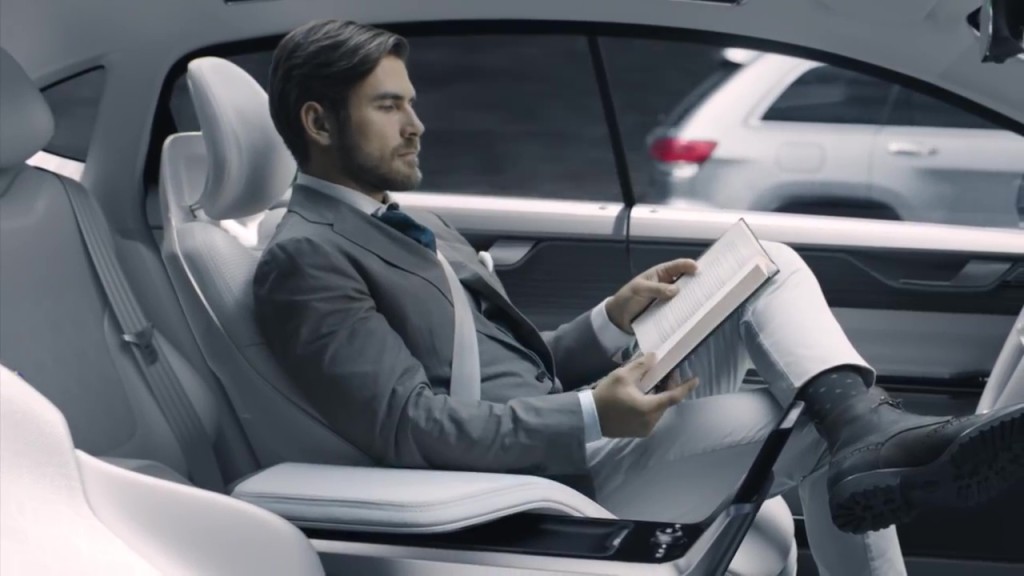CES is famous for its vast showcase of diverse gadgets (some stranger than others), but there are certain technologies that set tone for what’s to come. It will be up to brands to take advantage of these growing trends as they emerge to make the most out of them.
Autonomous Cars Make More Free Time
If there is dominant theme to this year’s show, it’s in the future of automotive technology especially self-driving cars, as the show was kicked off with Nvidia’s announcement of the Drive PX 2 autonomous vehicle technology.
Big announcements, such as how Volvo will have a fully autonomous fleet of XC90 luxury SUVs driving around the city of Gothenburg next year, and that its S90 sedan will be the first car sold in the US with semi-autonomous technology as a standard feature, means that the vision of city streets filled with self-driving cars may be realized in relatively short time.
Passengers who don’t have to keep their eyes on the road or their hands on the wheel are free to engage in watching entertainment, which means marketers will need to find ways to take advantage of a captive audience that’s on the move. It’s likely we’ll seeing partnerships grow between companies and location based or navigation apps, so that passengers can set their cars to find the nearest restaurants, hotels, shopping centers or other services as needed. Especially if all passengers end up watching video on mobile devices instead of looking out the windows at billboards.
Similarly, video streaming apps like FOX NOW can be designed to track a viewer’s changing location and adjust its ads accordingly. Furthermore, the shows themselves may be specially created and queued up to fit in the expected length of the car ride, which will impact how brands will reach audiences.
A Different Direction for VR
Last year ended with high hopes that devices like the Oculus Rift would usher in an era of VR, where users could fully immerse themselves in different locations and experiences. Those hopes were largely deflated when Oculus VR announced the $600 price tag for its Rift headset, which doesn’t take into consideration the $1,000 computer needed to get it to work, putting high-end virtual reality out of reach for a great many consumers.
However, there is still a great deal of potential for virtual reality to take off in other ways, particularly with mobile devices like the Samsung Gear VR. Companies have already been experimenting with 360-degree videos and games, which is bound to continue. Given the high accessibility of smartphones, it’s becoming increasingly likely that mobile devices will lead the charge in the VR revolution. It will be up to brands to create memorable experiences that will stand out when viewed through low cost headsets like Google Cardboard.
A possible alternative on the horizon is AR (augmented reality), which superimposes digital information onto the real world. Smartphone games like Ingress have already taken advantage of the concept, and upcoming devices like the Microsoft HoloLens are looking to bring it to an all new level. The beauty of AR is that users won’t have disengage from the real world, and can offer users incentives to visit physical locations.

